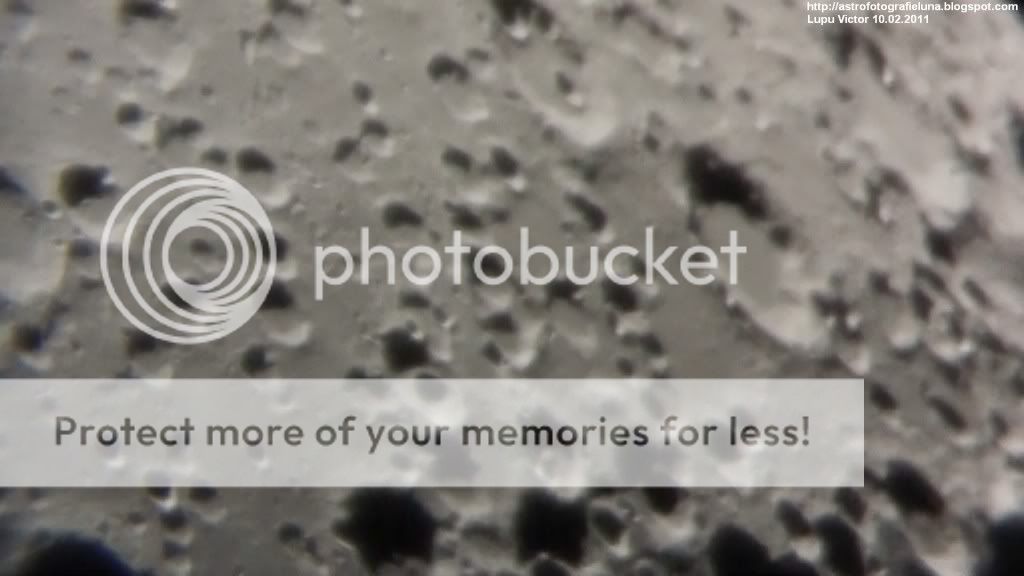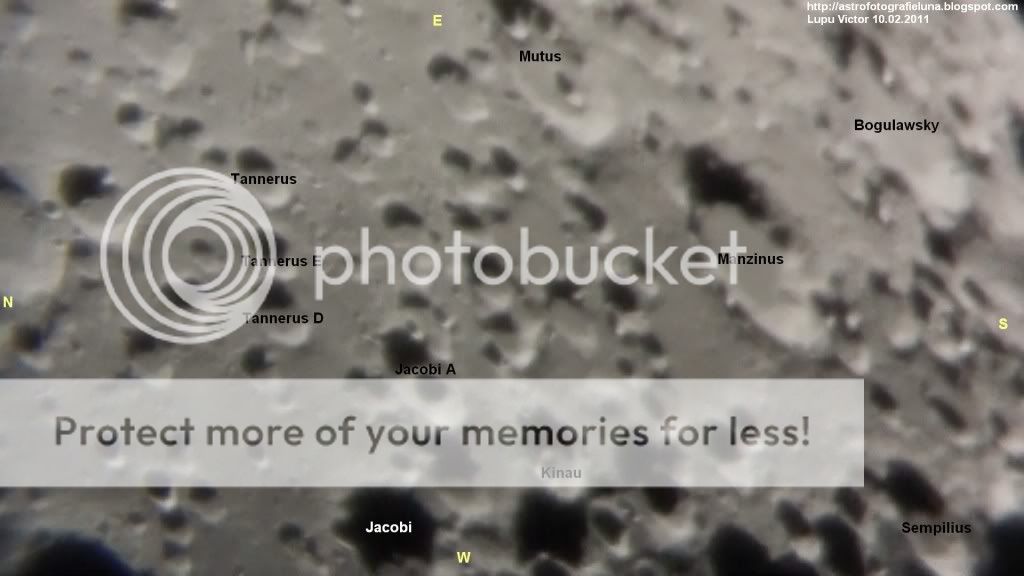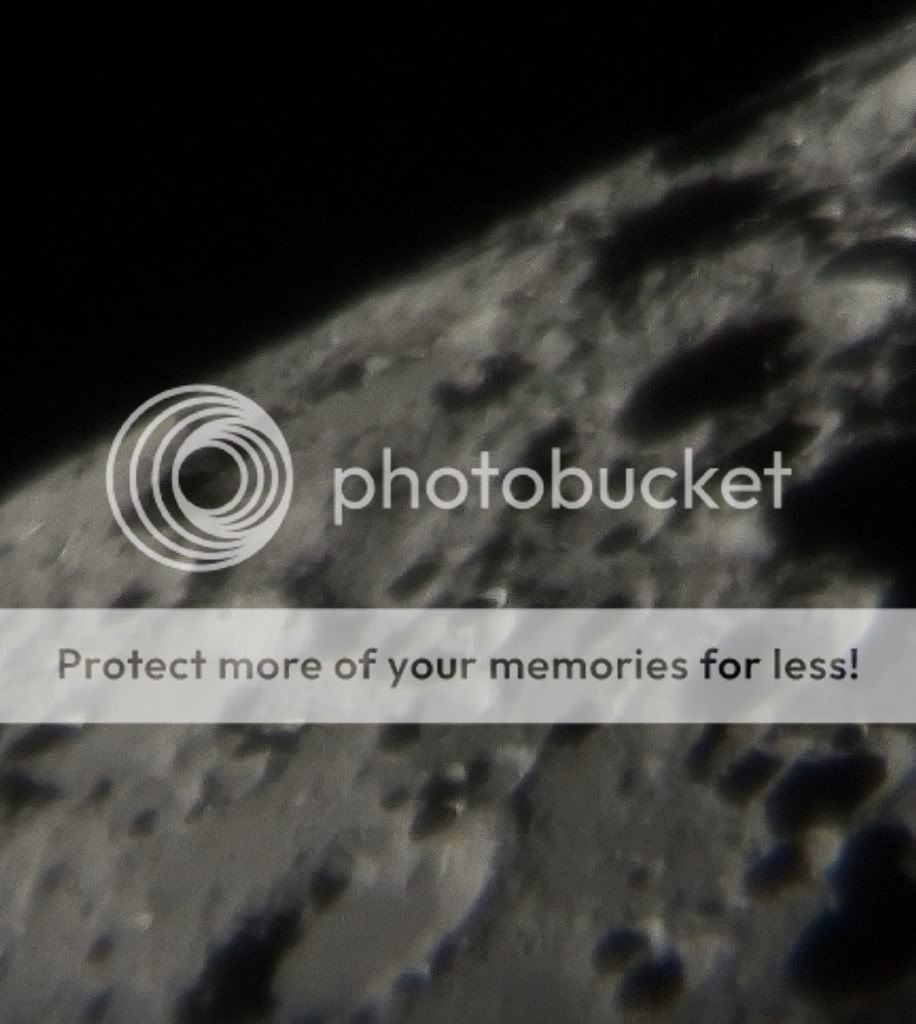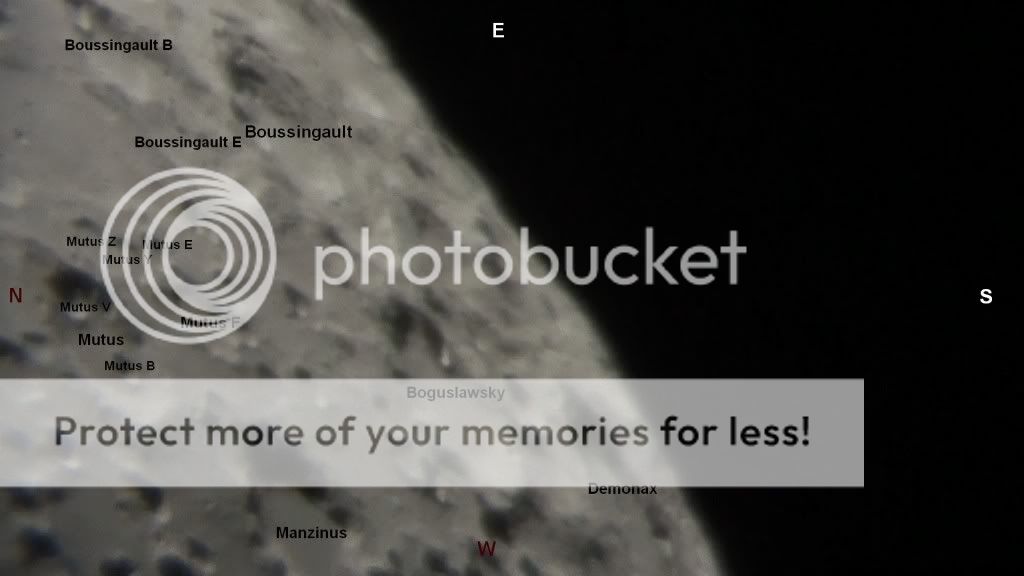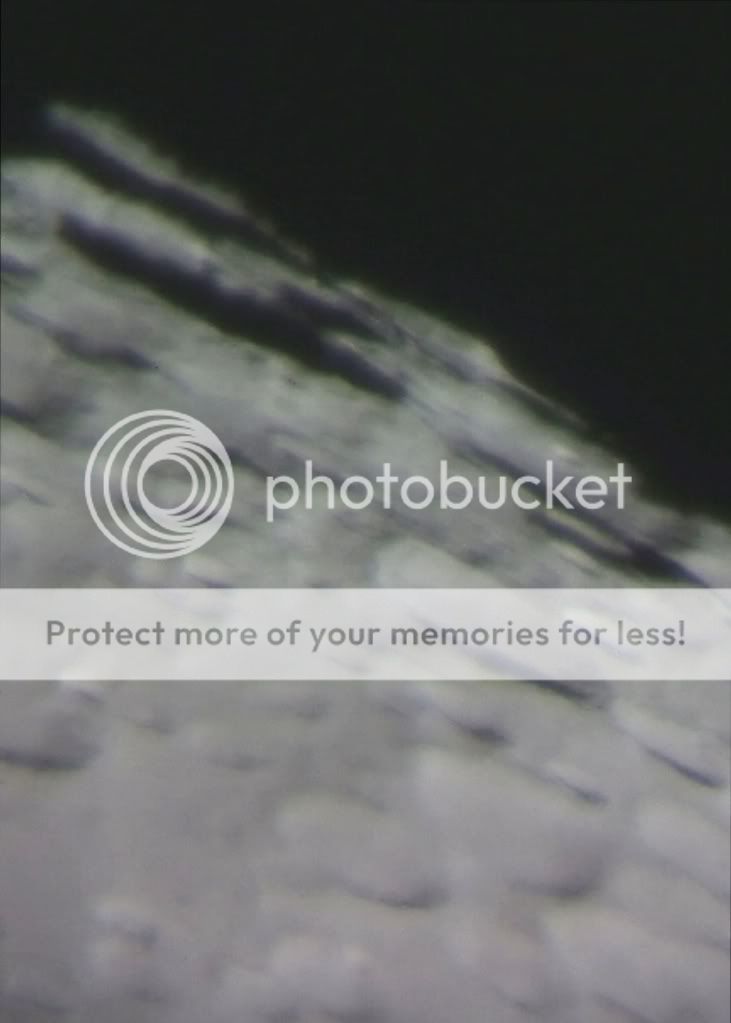Optics: Celestron C8-Newtonian telescope, plossl 20mm, 2x Barlow
Mount: CG5 (EQ5)
Device: Sony CX105
Filter: No
Date: 10/02/2011
Location: Baia Mare, Romania
Processing: Sony Vegas 10, video captures
In photo A: craters Hommel, Vlaq, Pitiscus, Rosenberger, Nearch (76 km) and Hagecius (76 km).
Nearch (76 km) is an impact crater, situated on the south-east region of the Moon, south-east of the crater Hommel. North of Nearch is Vlacq, and north-east lies Rosenberger. Nearch is 76 kilometers in diameter and 2.9 km deep and dates from pre-nectarian era, now 4.55 - 3.92 billion years ago.
The outer edge of the crater has been affected by small craters, which overlap along the eastern edge. The most important of these is Nearch A (43 km) on south-east edge. Small craters are found on the north and west. The rest of the interior walls are relatively intact, and retains its circular shape.
Hagecius (76 km), this crater forms a triangle with crater Rosenberger on north-west and Nearch on west-north-west. Like other craters, Hagecius was undergone further erosion of the impacts. South-eastern edge is overlaped by three smaller craters called Hagecius C (24 km), B (34 km) and G (30 km).
In photo C: crater Mutus, Manzinus, Jacobi (68 km), Boguslawsky (97 km), Tannerus (29 km), Kinau (42 km) and Sempilius (70 km).
Jacobi (68 km), has a margin of several overlapping craters along the southern edge, including Jacobi J (19 km), and a pair on the north side. The result is that the outer edges are flat along the north and south sides. On the north side, Jacobi A, forms a member of a chain of craters, forming a line on the floor inside, from north-east to south-west.
Boguslawsky (97 km) is located near the southern edge of the Moon. It lies northwest of the crater Demonax, and south-west of Boussingault (131 km). Due to its location Boguslawsky appears elongated.
Crater floor is flooded and with no many features. The edge is low. Crater Boguslawsky D is on the east side.
The name comes from the Palm (or Palon) Heinrich Ludwig (Pruß) von Boguslawski (7 September 1789-5 Iun 1851) who was a German professor of astronomy.
Tannerus (29 km). The edge of this crater is almost circular, with only a slight inward bulge along the northern edge where it is joined with Tannerus P (20 km). Edge is clear and well defined, although there are small craters along the border in the west and south. Crater floor is without marks or features.
Crater name is given from Adam Tanner (in Latin, Tannerus) (14 April 1572 - May 25, 1632) which was an Austrian Jesuit professor of mathematics and philosophy.
Kinau (42 km), is a mile deep. Kinau may date from the pre-nectarian era, 4.55 - 3.85 billion years ago. North-western edge of the crater walls was strongly affected by the impacts, and is overlaid by a pair of small craters, bowl-shaped. The remaining edge is distorted into a hexagonal shape, with the small craters along its rim. The interior walls are relatively low and the interior floor is with almost no characteristics. There is a small rise near the middle of the crater.
The crater is named after 19th century German priest, teacher and amateur astronomer Adolph Gottfried Kinau.
Sempilius (70 km). The crater may also date back to pre-nectariana, 4.55 - 3.85 billion years ago.Sempilius was affected by impacts and is relatively circular.The crater is named after Hugh Sempill (or Semple ) (Latin Sempilius) (between 1589 or 1596, and 1654) which was a Scottish Jesuit mathematician and linguist.
To locate craters above, I've described crater names in the picture below, taken on 14/11/2010.








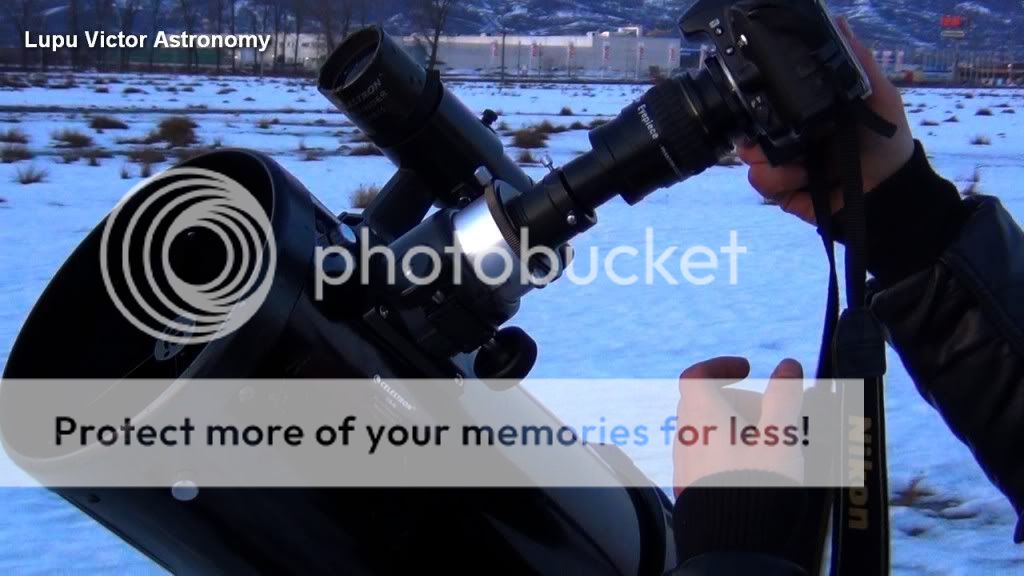

 Monday, May 23, 2011
Monday, May 23, 2011
 Unknown
Unknown



